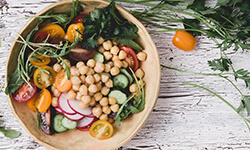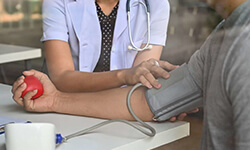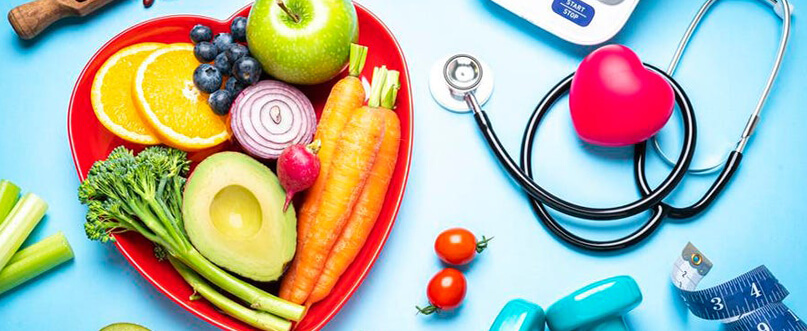Diet plays a vital role in preventing and managing many lifestyle diseases like hypercholesterolemia, diabetes, hypertension, and heart conditions. If you are hypertensive and wonder how to reduce blood pressure, you will be pleasantly surprised that changing your food habits and controlling your diet can help you do so. We’ve put together a few easy tips and dietary habits that you can incorporate into your daily routine and maintain your blood pressure levels within the normal range.
Dietary Tips to Lower Blood Pressure
Before reducing blood pressure with diet, we must know that some foods can increase blood pressure, whereas some help reduce it. Also, some foods increase or decrease your weight, which indirectly influences your blood pressure levels.
Although most hypertensive patients are prescribed medications to help bring their blood pressure levels down, the doctor will always suggest lifestyle changes, including dietary modifications.
Here are some dietary tips that can help you manage your blood pressure:
-
Track your food intake
The best way to keep your blood pressure and other parameters under control is to keep a track of your food intake. Keeping a count of the calories consumed and burned helps you maintain a healthy weight.
Food journaling or using a simple mobile note-taking app can help you keep track of what you eat and drink during the day. This also gives you an estimate of the number of calories you need to burn each day to keep your blood levels normal. While an Indian diet plan for high blood pressure is usually effective, you must limit your alcohol intake and quit smoking.
-
Reduce your sodium intake
Eating a diet rich in sodium every day can increase your blood pressure levels. Sodium is most commonly found in salt. When you eat excess salt or foods rich in sodium, the body retains excess water to eliminate it. This additional water in the body can increase your blood pressure levels. For this reason, the American Heart Association (AHA), you must limit your daily sodium intake to not more than 1500 mg. Did you know that a teaspoon of salt has 2400 mg of sodium?
Some ways to reduce sodium intake are:
– Avoid table salt as much as possible
– Always read product labels to find foods that contain minimal sodium
– Use healthier salt substitutes
– Use foods that are sodium-free, low sodium, or unsalted
– Use salt-free seasonings
-
Know what to eat
Sodium is a major causative factor for an increase in blood pressure. While you must avoid eating foods rich in sodium, you must know what foods can help reduce your blood pressure levels. Eating a diet rich in minerals like potassium, magnesium, and fiber is great for lowering blood pressure. You can find these minerals abundantly in the following foods:
– Nuts
– Seeds
– Legumes
– Lean meats
– Poultry
– Apples
– Apricots
– Carrots
– Broccoli
– Collard greens
– Beet greens
– Dates
– Grapes
– Kale
– Oranges
– Spinach
– Tomatoes
-
Follow a DASH diet
Dietary Approach to Stop Hypertension or the DASH diet is a popular diet used to reduce hypertension. The hypertension diet chart of most patients with high blood pressure usually includes the DASH diet.
-
Skip trans fats
Trans fats increase blood cholesterol and have been linked to an increased risk for diabetes, hypertension, and heart disease. They are harmful if you are overweight. Many packaged and processed foods like spreads, dips, chips, cookies, fried foods, etc., have lots of trans fats. Please read the product labels before picking them up to make sure you steer clear of trans fat.
-
Avoid other harmful foods
Other harmful components in food that can increase your blood pressure levels include nitrates and refined sugar.
What is the DASH Diet?

The DASH diet plan effectively reduces blood pressure levels as it includes eating a diet rich in fruits, vegetables, poultry, lean meat, and low-fat dairy. This diet plan is successful because it recommends eating less salt and sugar than the regular diet you eat
When you are following the DASH diet, you cannot eat sweetened beverages, desserts, red meat, fats, and processed meats. Eating a DASH diet reduces your risk for heart disease and strokes.
Here are some suggestions to include in your DASH diet (daily):
- 7-8 servings of grains
- 4-5 servings of vegetables
- 4-5 servings of fruits
- 2-3 servings of low-fat or fat-free dairy products
- 2 or fewer servings of lean meat, poultry, and fish
- 4-5 servings per week of seeds, nuts, and legumes
- 2-3 servings of fats and oils
- Less than 5 servings of sweet each week
If you are hypertensive, speak with your doctor about following a DASH diet.
Key Takeaway

Many people with hypertension get anxious about taking lots of medications and restricting their diet to boring food to control their blood pressure. However, with the right lifestyle modifications, healthy dietary habits, and fitness routines, hypertensive patients can lead healthy and normal lives.
If you want to learn more about how to reduce blood pressure with diet, please consult with your doctor and dietician right away. Find more such informative content here on BPinControl.
Note of Caution: This article is for informational purposes only. Always consult your doctor in case of any blood pressure or other health-related problems.</strong >
Disclaimer
The information contained in this article is to educate, spread awareness in relation to hypertension and other diseases to the public at large. The contents of this article are created and developed by BPinControl.in through its authors, which has necessary, authorisations, license, approvals, permits etc to allow usage of this articles on The Website. The views and opinions expressed in this article are views, opinions of the respective authors and are independently endorsed by doctors. Although great care has been taken in compiling and checking the information in this article, The Website shall not be responsible, or in any way liable for any errors, omissions or inaccuracies in this article whether arising from negligence or otherwise, or for any consequences arising therefrom. The content of this article is not a substitute for any medical advice. The Website shall not be held responsible or liable for any consequence arising out of reliance on the information provided in the article.




